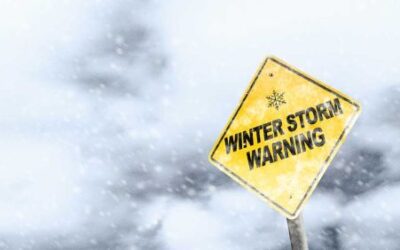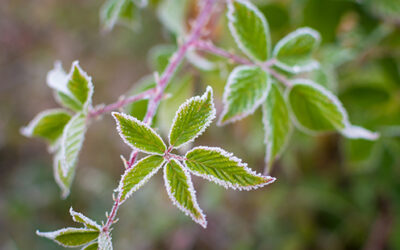More Than Just a Fall Nuisance
When the air turns crisp and trees explode with color, few sights are as beautiful as a yard covered in autumn leaves. But as those leaves begin to fall and collect on lawns, walkways, and driveways, they can quickly shift from picturesque to problematic. Wet leaves, in particular, pose hidden dangers that go beyond simple yard clutter.
Left unattended, they can damage turf, create safety hazards, clog drains, and even lead to costly repairs. Understanding the risks of wet leaves – and how to manage them effectively – is essential for protecting your property, your lawn’s health, and your family’s safety.
Slippery When Wet: A Hidden Safety Hazard
One of the most immediate dangers of wet leaves is how slick they become. When rain or morning dew dampens the leaf layer, they can create a surface as slippery as ice.
On driveways, walkways, and steps, this can lead to slips and falls, especially for children, older adults, or anyone carrying groceries or packages. The problem is compounded when the leaves begin to decompose, creating a slimy film that’s nearly invisible but highly dangerous.
For homeowners and property managers, keeping paved areas free from leaves isn’t just about curb appeal – it’s about liability. A simple fall can lead to serious injury, medical bills, or insurance claims. Regular clearing of wet leaves is one of the easiest ways to maintain a safe and accessible property throughout the fall and winter seasons.
The Threat to Healthy Lawns
While many people assume leaves will simply “decompose naturally” and nourish the grass, thick mats of wet leaves do the opposite. When they accumulate and stay damp, they block sunlight, smother the grass, and trap moisture against the soil.
This suffocates the turf, depriving it of oxygen and light. Over time, the trapped moisture encourages fungal diseases like snow mold and brown patch, leaving unsightly dead spots in the spring.
In addition to disease, wet leaves create the perfect breeding ground for pests such as grubs, mosquitoes, and even rodents seeking warmth and shelter. These conditions can quickly turn a lush lawn into a patchy, unhealthy mess by the time warm weather returns.
Proper leaf removal and lawn aeration are essential for maintaining grass health through the cooler months. Even mulching leaves must be done carefully – too thick a layer of shredded leaves can still block airflow and trap moisture.
Damage to Driveways and Hard Surfaces
Wet leaves aren’t just bad for lawns – they can also wreak havoc on your hardscapes. As they sit and decay, leaves release tannins and natural acids that can stain concrete, pavers, and asphalt.
When those stains set, they can be difficult or even impossible to remove. Over time, organic matter that seeps into cracks can also hold moisture, accelerating freeze-thaw damage in colder climates.
The longer wet leaves sit on driveways and walkways, the greater the risk of staining and surface deterioration. Regular leaf blowing, sweeping, or professional cleanup can prevent long-term wear and protect your investment in your hardscaping.
Clogged Gutters, Drains, and Downspouts
Leaves that aren’t managed on the ground often end up in gutters and storm drains, where they create another serious issue: blockages.
When wet leaves clog drainage systems, water backs up and overflows. On roofs, that can lead to leaks and structural damage. On driveways and patios, it creates puddling and erosion. Around foundations, pooled water can cause cracks or seep into basements.
Cleaning gutters regularly during fall – especially after heavy leaf fall or storms – is critical for preventing expensive water damage later in the season. A single afternoon of preventive maintenance can save thousands in potential repairs.
The Environmental Impact
Beyond safety and property risks, there’s also an environmental angle to leaving wet leaves unmanaged. When leaves wash into storm drains, they can contribute to nutrient pollution in local waterways. As they break down, they release phosphorus and nitrogen – nutrients that fuel algae blooms and harm aquatic life.
By properly managing your leaves, you’re not just maintaining a tidy yard – you’re helping protect the local environment and water systems in your community. Composting or mulching leaves responsibly returns nutrients to the soil without overwhelming drainage systems.
Prevention Tips: Keeping Leaves Under Control
Managing wet leaves effectively doesn’t have to be overwhelming. A few consistent habits can make a big difference in keeping your property safe and healthy:
- Rake or blow frequently: Don’t wait until every leaf has fallen. Frequent, smaller cleanups prevent buildup.
- Mulch properly: Use a mulching mower to shred leaves into fine pieces, allowing them to decompose evenly without smothering grass.
- Clear paved surfaces: Keep driveways, walkways, and decks free of leaves to prevent slips and staining.
- Maintain drainage: Check gutters and downspouts regularly to ensure water can flow freely.
- Schedule professional cleanup: A lawn care service can handle leaf removal efficiently, including hauling and disposal.
By keeping up with these simple steps, you can enjoy the beauty of fall without dealing with the costly consequences of neglecting your leaves.
Why Timing Matters
Many homeowners wait until late fall to do a single big cleanup, but by then, damage may already have begun. Regular maintenance throughout the season prevents wet leaves from compacting and trapping moisture.
If your property is shaded or surrounded by mature trees, it’s especially important to stay ahead of leaf buildup. Shaded areas stay damp longer and promote faster decomposition – which means a higher risk of disease, pests, and staining.
Scheduling routine cleanup or maintenance every couple of weeks can keep your lawn healthy and prevent long-term issues before they start.
The Hidden Cost of Ignoring Wet Leaves
Ignoring wet leaves might seem harmless, but the long-term consequences add up quickly. You could face turf replacement, pest control expenses, and driveway repairs – not to mention the safety risks.
Regular maintenance protects your investment in your home’s landscape and prevents avoidable damage. It also keeps your yard looking cared for and inviting during a season when many properties begin to look neglected.
A clean, well-maintained yard doesn’t just enhance curb appeal – it reflects pride of ownership and care for your environment.
Final Thoughts
At Jack’s Lawn Care & Landscaping, we know that maintaining your property in the fall goes beyond leaf raking – it’s about protecting your home, your family, and your investment. Our professional team provides comprehensive seasonal cleanup, lawn maintenance, leaf removal, and driveway care services throughout Central Virginia. We ensure your property stays safe, healthy, and beautiful all season long.
If wet leaves have started piling up around your lawn or driveway, now is the perfect time to schedule a cleanup before the real damage sets in. Contact us today to learn more about our fall cleanup and maintenance services and keep your home looking its best all year round.



